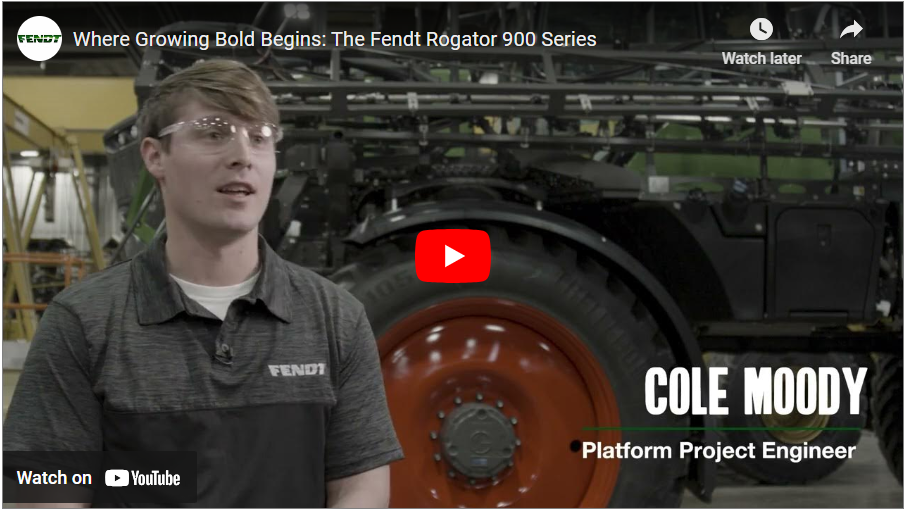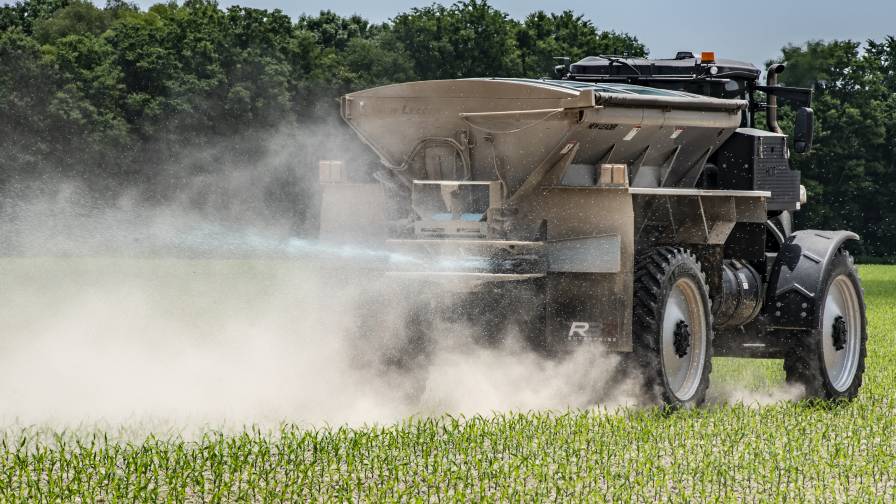Fertilizer Spreaders: Productivity, Accuracy Among Top Priorities for Manufacturers
Business is about making adjustments. That’s something that everyone in the ag industry has relearned recently — fertilizer spreader manufacturers were no exception. The more quickly an enterprise (and its customers) can respond to the constantly shifting variables, the more successful it (and they) will be.
“We are in year two of a post pandemic supply chain crisis with continued significant supplier challenges between price increases, extremely long lead times for components, and transportation costs,” says Joe Anderson, VP Sales and Marketing, GVM Inc. “Customers are starting to realize the time frame to get a new piece of equipment, by either early ordering or understanding that delaying the buying decisions will not guarantee equipment delivery in time for spring.”
Another lesson spreader customers have learned has been a benefit for manufacturers.
“Spreader technology is helping to lead the way in combating other issues ag retailers are struggling with,” says Chris Dempsey, Global Director of Case IH Precision Technology. “Specifically, skilled operators can be hard to come by. New autonomous solutions are the easiest way to address this in the future. Our customers are constantly looking for new ways to improve consistency while creating less waste and increasing productivity. They also want to find ways to reallocate their labor so they can do more with the same number of people working from inside the cabs of their spreaders.”
Those issues have translated into 2022 being a pretty good year for many manufacturers.
“Strong,” is the word Matt Miner, Director of Strategic Partnerships, New Leader, uses to describe company’s 2022. “We experienced record sales and record productivity, all while maintaining our engaged company culture and high-quality safety program.”
Miner used another word to describe the difference between 2022 and the previous couple of years — “Change.” He added: “From supply chain disruptions, to inflation, labor shortages, and the lingering effects of the pandemic, our team has weathered a lot of change. Both personally and professionally. This year required us to come together as a team like never before, and we’re extremely proud of how our team navigated these challenges.”
Opportunities
Like many areas of agriculture, spreaders are receiving their fair share of technology.
“Continuing to adapt and incorporate new technology is essential,” Dempsey says. “Ag retailers benefit from the use of vehicle and fleet monitoring that can be found using connected vehicles, as well as enhancing efficiency by using cloud transfer of jobs, completed tasks, remote and remote display viewing for troubleshooting or training.”
It’s little surprise what’s driving the need for that technology.
“More customers are demanding a more precise fertilizer application therefore, section control capabilities are at the forefront of their purchasing needs,” Anderson says. “The opportunities for the industry are thinking outside of the box and using other forms of data, other than density and ground speed, to determine fertilizer application widths and accuracy — such as wind speed, humidity, and real time spread pattern monitoring.”
For grower-customers, “Productivity continues to be a driving force,” Miner says. “The nation’s food production requirements are only increasing and placing increasingly high demands on our custom applicators. Machines need to be running and they need to be running efficiently and effectively. Service, reliability, productivity, and accuracy are vital to our customers’ success and continue to be our top priority in product support and new product development.”
One challenge for growers is whether to buy or rent their equipment from a dealer. The team at Salford Group worked through this issue with a grower to get some perspective.
“This is a question that many producers look at for their fertilizer plan and we took a moment to sit down with Dave Huey a soybean and wheat cash crop producer in Ontario as to how he determined the appropriate option for his operation,” the company shared on its website.
“Based on Dave’s evaluation of his 300-acre farm, he was able to quantify the return he projects to receive when he made the investment in a Salford BBI Liberty spreader versus relying on continued commercial rentals,” the company says. “Dave felt he is able to achieve more flexibility in timing his application and he is able to rely on consistent crop yields with an even spread from the flat spread pattern.”
Challenges
With all the success in 2022, savvy business leaders plan for the challenges.
“We are seeing some customers change their purchases due to the high stainless-steel pricing,” explains Arnie Sinclair, President of Heartland AG Systems. “They are delaying some spreader and tender purchases in hopes that pricing will decrease, and steel prices stabilize.
“As the size of growers increases, we will see many of them look at a used self-propelled piece of equipment that has precision capabilities,” Sinclair continues. “As the industry continues to better manage crop inputs with split applications of nitrogen and other products due to regulations, this will help keep the demand for pull type spreaders steady in next two to three years.”
Labor continues to be an issue throughout the supply chain.
“Moving forward, ag retailers will continue to face labor and productivity challenges,” Case IH’s Dempsey says. “That includes everything from finding labor to doing more with less and making the most of tight windows. It’s our job to make sure we address these issues and provide a tangible, effective solution. With our forthcoming autonomous spreader solution, we feel like we can address these issues head-on.”
New Leader’s Miner also believes labor will continue to be an issue, but sees the positive side of that for manufacturers.
“The workforce continues to shrink while the nation’s food production needs continue to grow,” Miner says. “Autonomous machines provide the food production industry with the flexibility and opportunity it needs to maximize their time, resources, and efficiency.”
The past year has been a pretty good one for spreader manufacturers. And they seem to be excited about next year, as well.
“2022 has been an exciting year for Case IH,” Dempsey says. “Thanks to our partnership with Raven Industries, we’re continuing to advance agriculture through innovative technological solutions. We’re proud to be at the forefront of autonomous spreader technology and the future of agriculture.”










